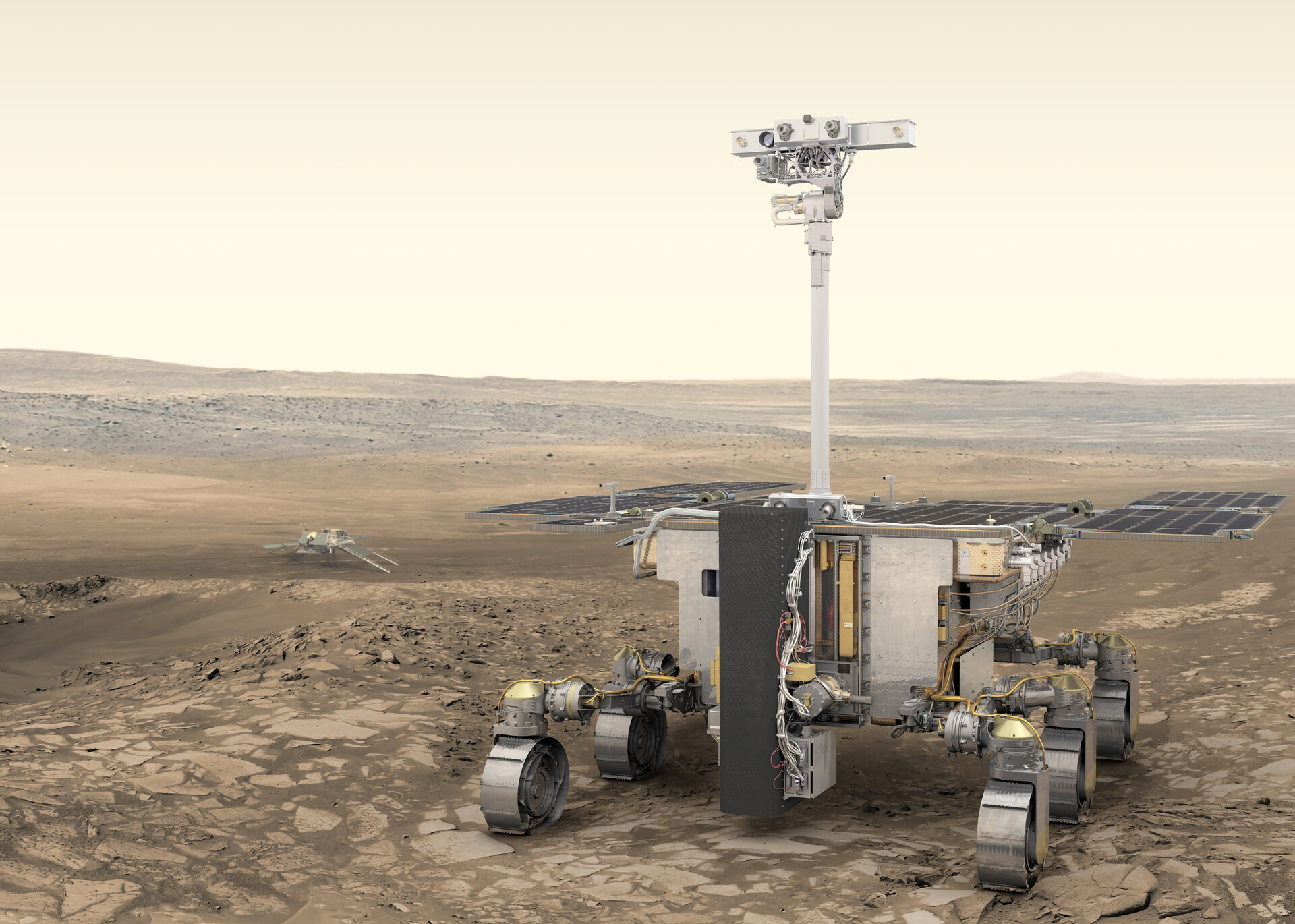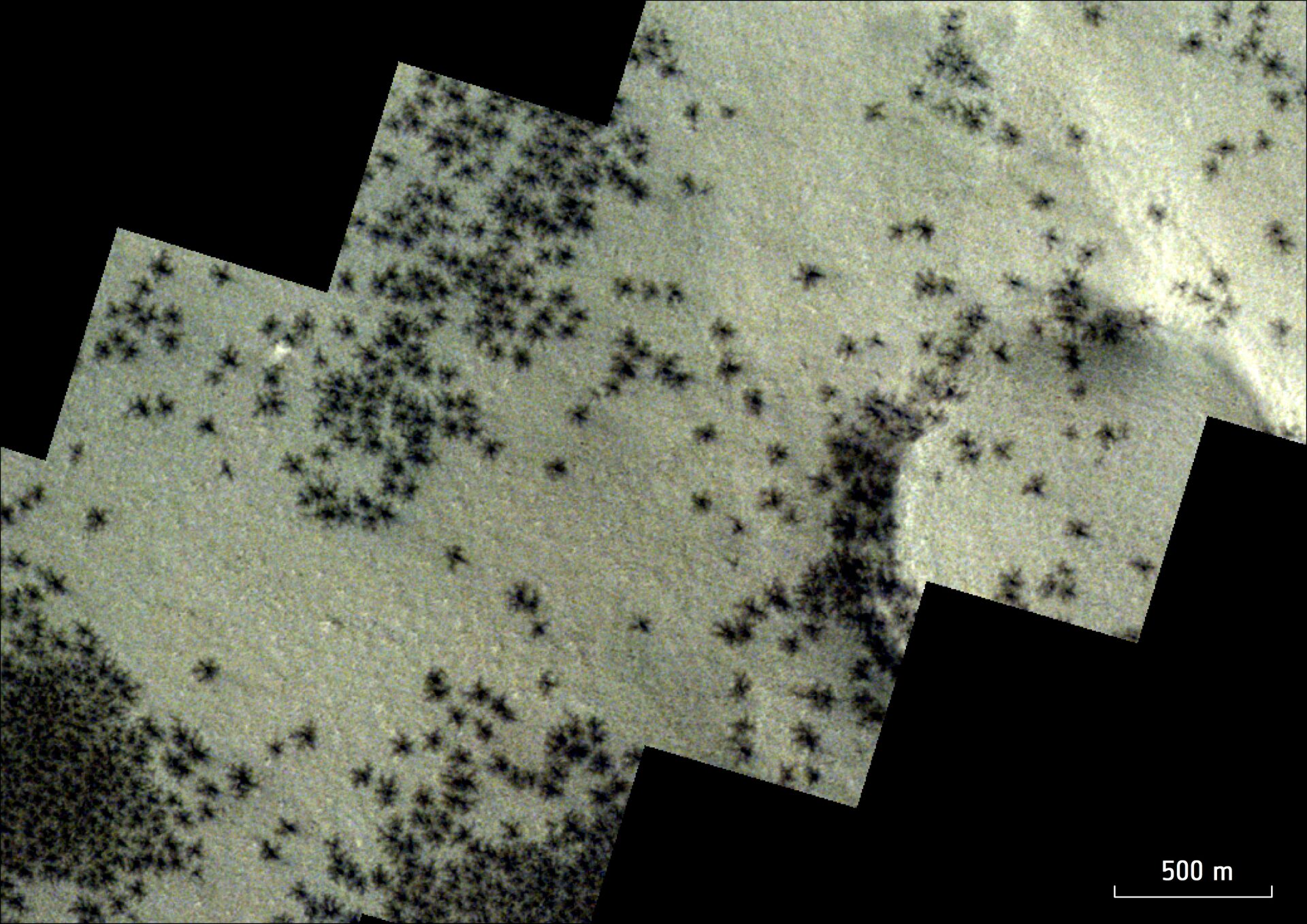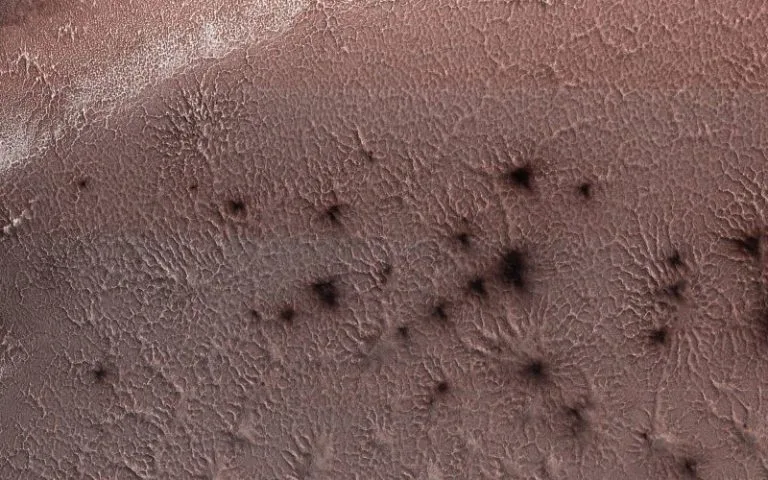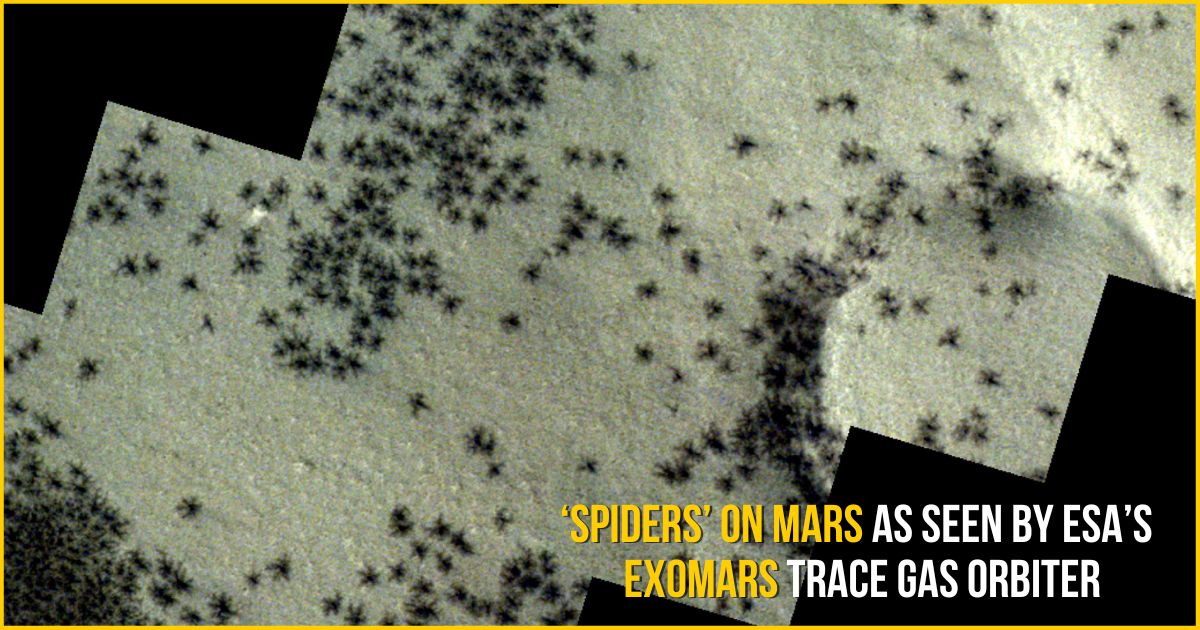Table of Contents
- Spiders on Mars
- Discovery of the Spiders on Mars or Spider-Like Formation
- Explanation of the Theory
- Conclusion
Spiders on Mars

For years, scientists and space fans have been fascinated by Mars, the mysterious Red Planet. People are drawn to its barren, rocky landscapes and rough terrain, which we’ve been studying closely for a long time. But just when we thought we knew all there was to know, Mars surprised us with something new: a strange spider-like shape on its surface. This discovery has sparked even more curiosity and excitement about what else Mars might be hiding.
Dr. Mark McCaughrean, Senior Advisor for Science & Exploration at ESA, highlights the importance of understanding Martian surface features: “The spider-like formations on Mars offer a glimpse into the planet’s dynamic geologic history. Studying these features can help us unravel the mysteries of Mars’ past and present environment.”
Discovery of the Spiders on Mars or Spider-Like Formation
These features happen when spring sunlight shines on layers of carbon dioxide that collected during the dark winter months. The sunlight warms up the carbon dioxide ice at the bottom, turning it into gas. This gas builds up and breaks through the ice above it. As it bursts out, it carries dark dust, shooting up like tall fountains or geysers through cracks in the ice. Then, it falls back down, leaving dark spots on the surface. This process also makes ‘spider-shaped’ patterns underneath the ice, just like the ones we see here.
ESA’s Mars explorers, the ExoMars Trace Gas Orbiter (TGO), have captured clear images of the tendril-like patterns of the spiders, as seen below. These spiders, captured by TGO, are located near the area depicted in this new Mars Express image, but outside of it. The Mars Express view displays the dark spots on the surface created by escaping gas and material. Meanwhile, the perspective from TGO also reveals the spider-like, web-like channels carved into the ice below.

Explanation of the Theory
This fascinating phenomenon known as “spider-like terrain” or “araneiform terrain” observed on the surface of Mars. This unique feature occurs in regions near the Martian poles during the spring season. Lets understand this phenomenon step by step:
Formation of Carbon Dioxide Ice:
During the cold, dark Martian winter, carbon dioxide in the atmosphere freezes, forming a layer of dry ice on the surface. This layer accumulates over time, creating a thick coating of frozen carbon dioxide
Spring Sunlight Activation:
As the Martian winter transitions to spring, sunlight begins to reach the polar regions, including the areas covered in carbon dioxide ice. The intensity of the sunlight increases with the changing seasons.
Thermal Effect on Carbon Dioxide Ice:
When sunlight shines on the layers of carbon dioxide ice, it warms the ice at the bottom. This localized heating causes the frozen carbon dioxide to sublimate directly from solid to gas without melting into liquid first.
Buildup of Gas Pressure:
As the carbon dioxide ice sublimates, it generates gas that becomes trapped beneath the surface layer of ice. The gas accumulates and creates pressure within the ice layer.
Eruption of Gas and Dark Dust:
Eventually, the pressure from the trapped gas becomes too great, causing it to burst through the weaker points in the ice above. This sudden release of gas propels dark dust particles from beneath the surface, creating tall, fountain-like eruptions known as “geysers.”
Formation of Spider-like Patterns:

As the gas erupts through cracks in the ice, it carries dark dust particles with it, creating intricate patterns resembling spider legs or branching channels on the surface. These patterns are formed as the gas escapes in multiple directions, leaving behind distinctive araneiform or spider-like terrain.
Deposition of Dark Spots:
As the gas and dust settle back onto the surface, they leave behind dark spots or splotches. These spots contrast with the lighter-colored Martian soil, creating visible markings on the landscape.
Conclusion
Firstly, the “spiders” on Mars aren’t actual spiders like we have on Earth. Instead, it’s a captivating phenomenon called “spider-like terrain” or “araneiform terrain” seen on the planet’s surface. When gas bursts through cracks in the ice, it carries dark dust particles, forming intricate patterns that look like spider legs or branching channels on the surface. These patterns take shape as the gas escapes in different directions, leaving behind unique araneiform or spider-like terrain.
